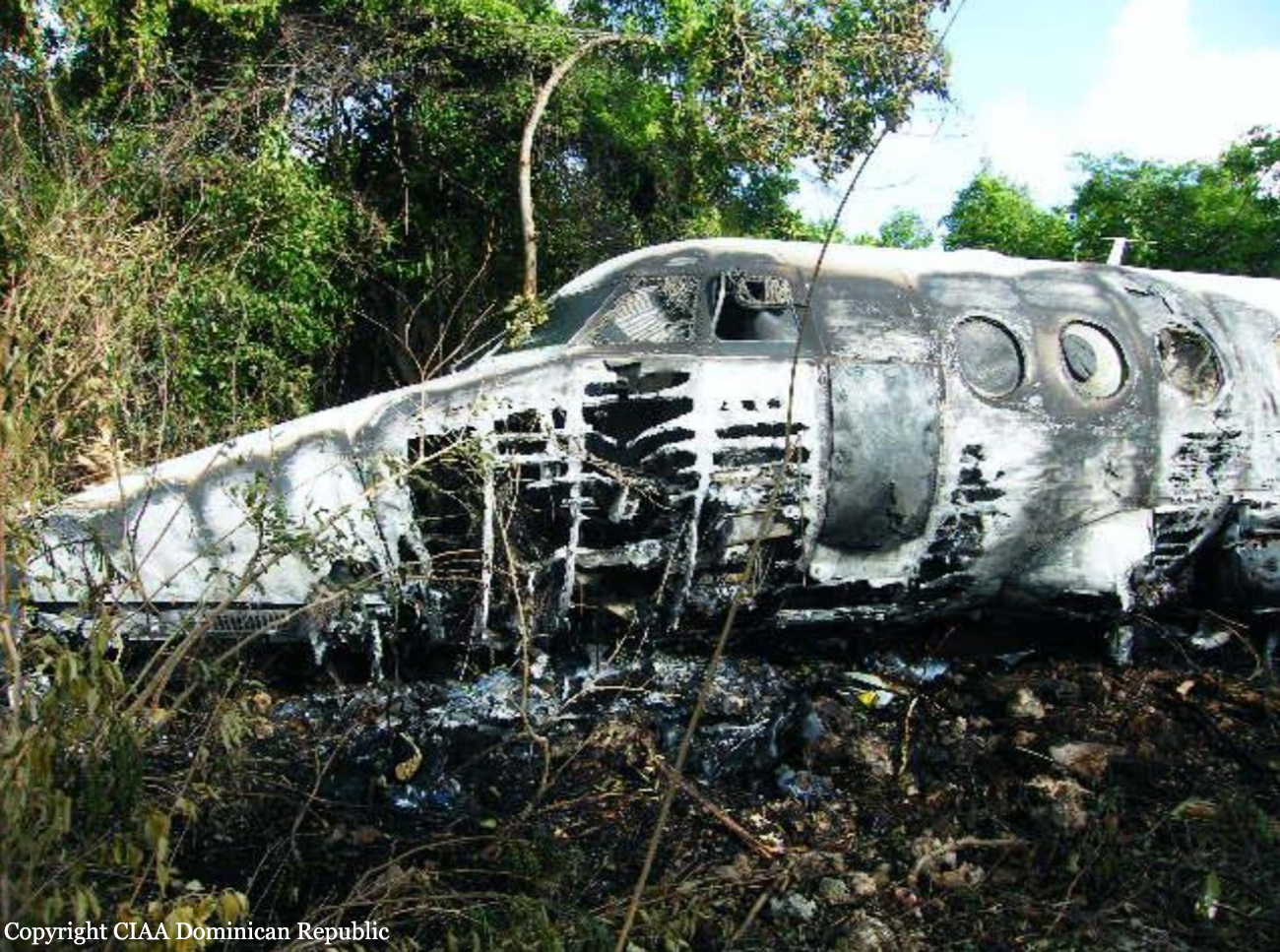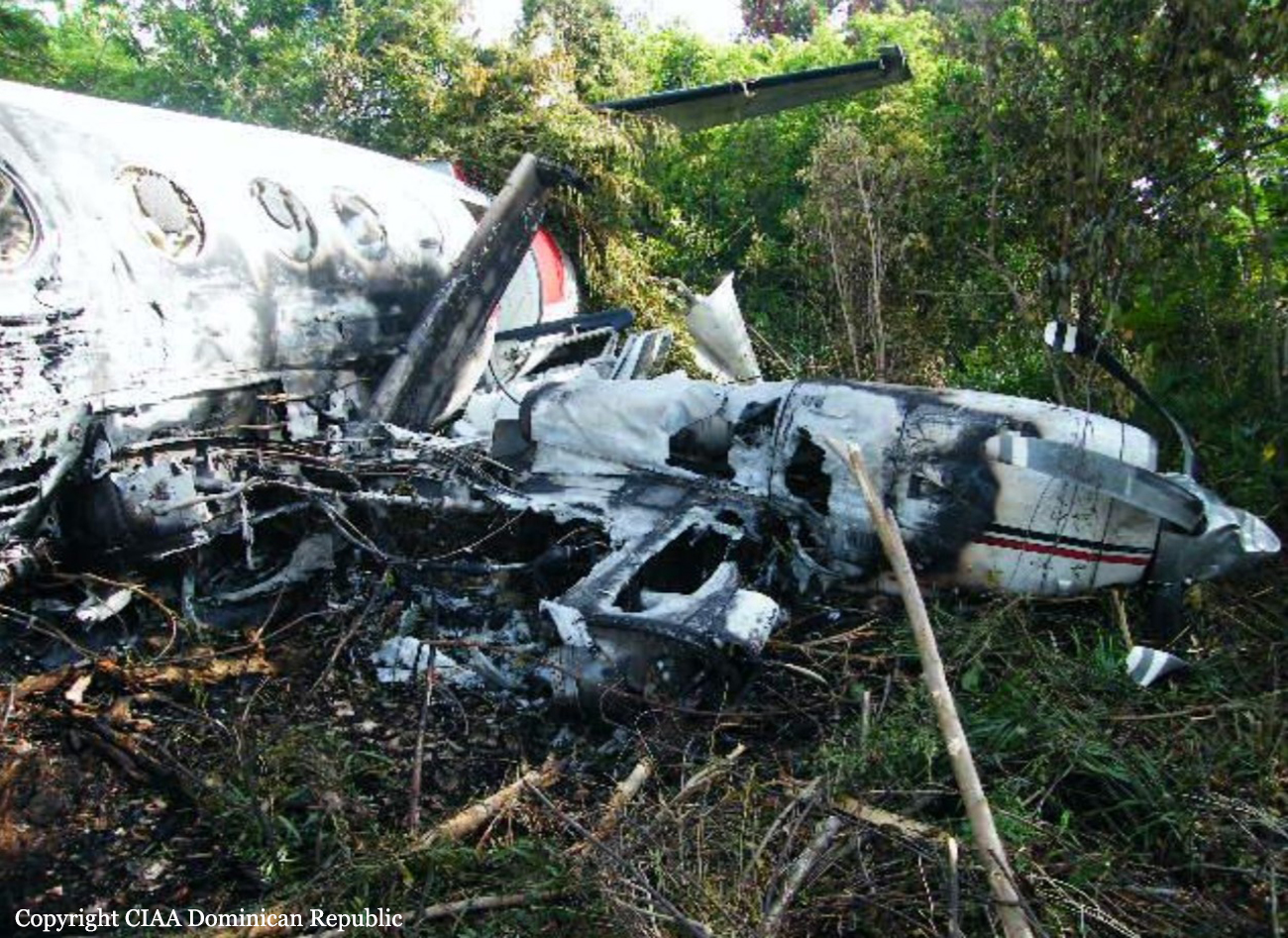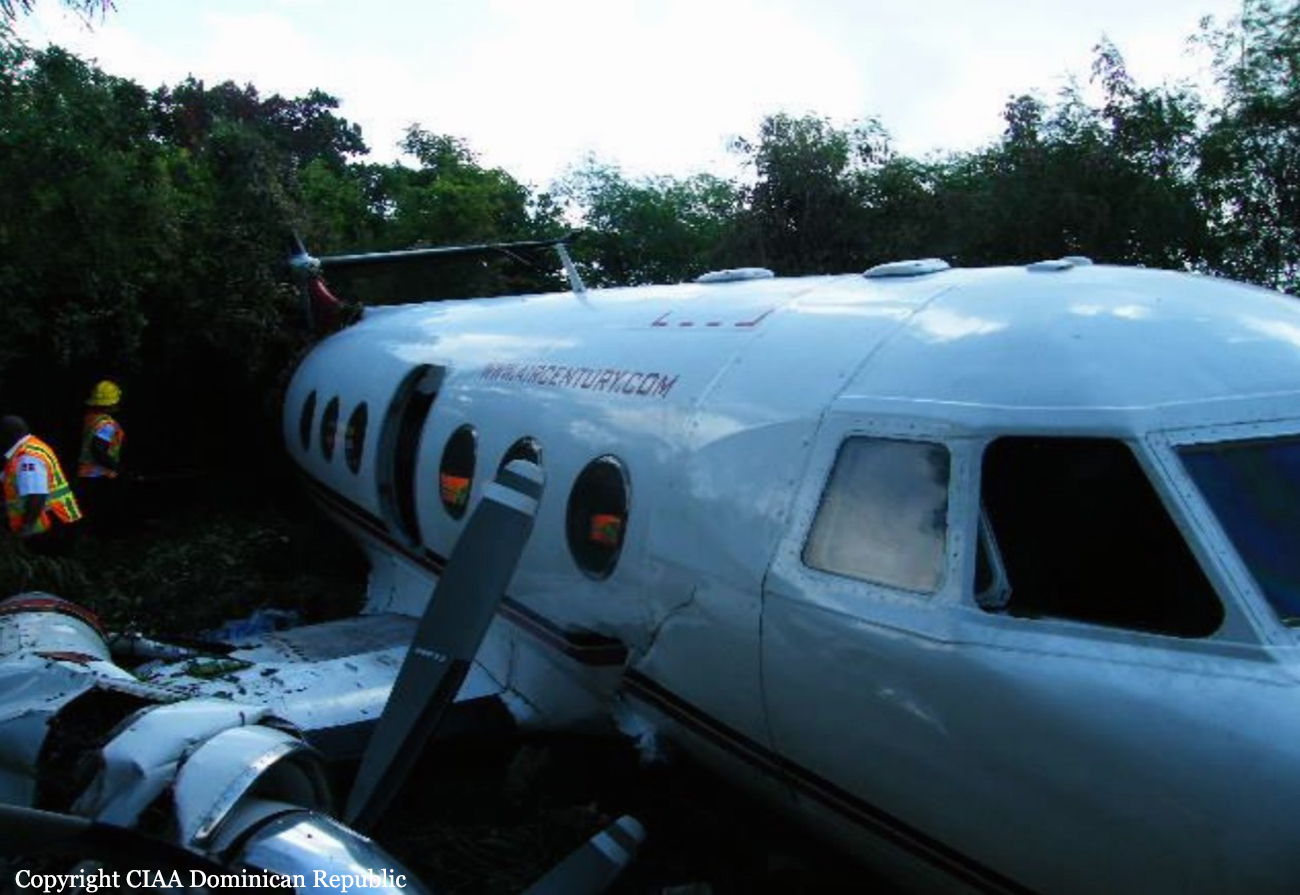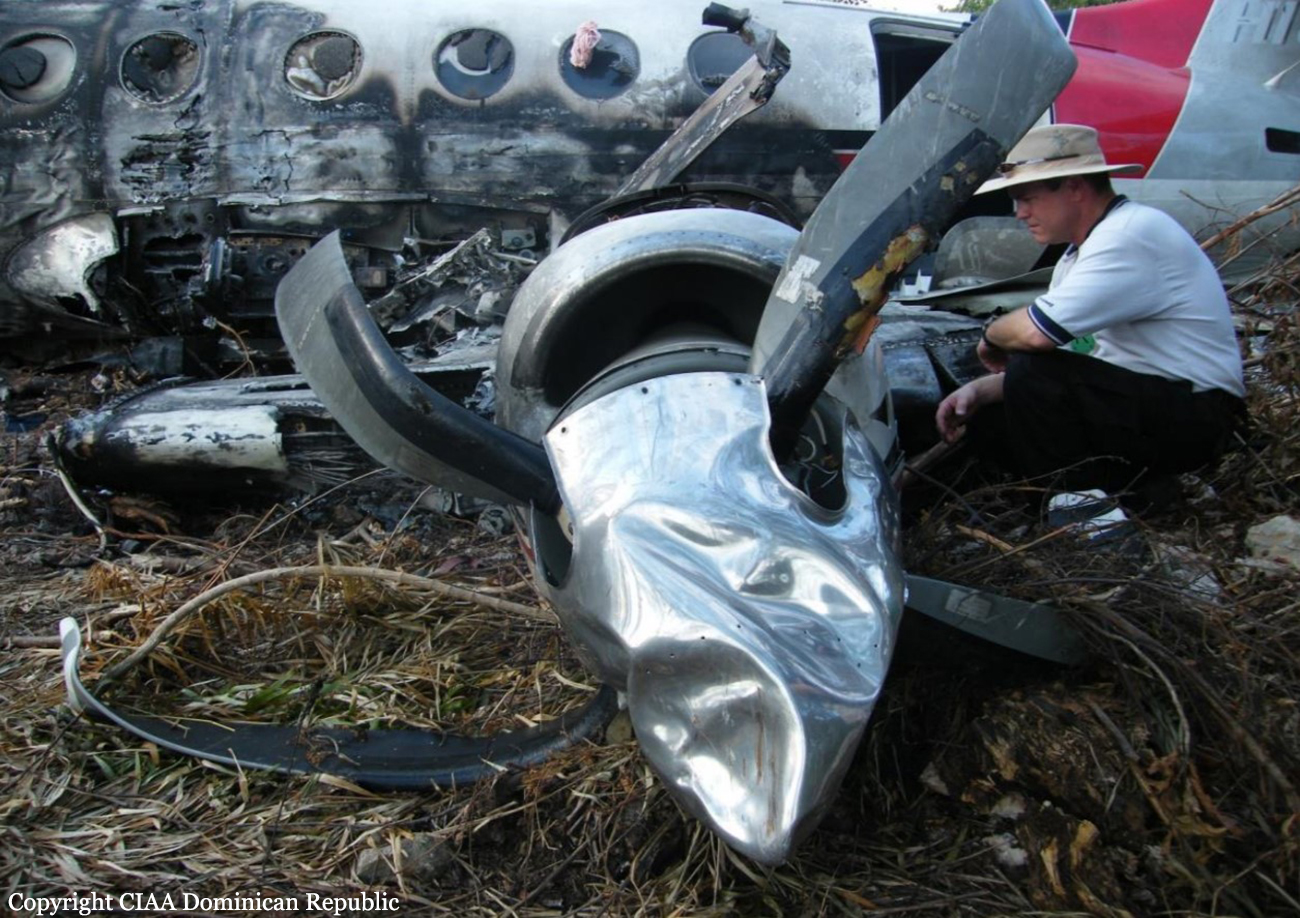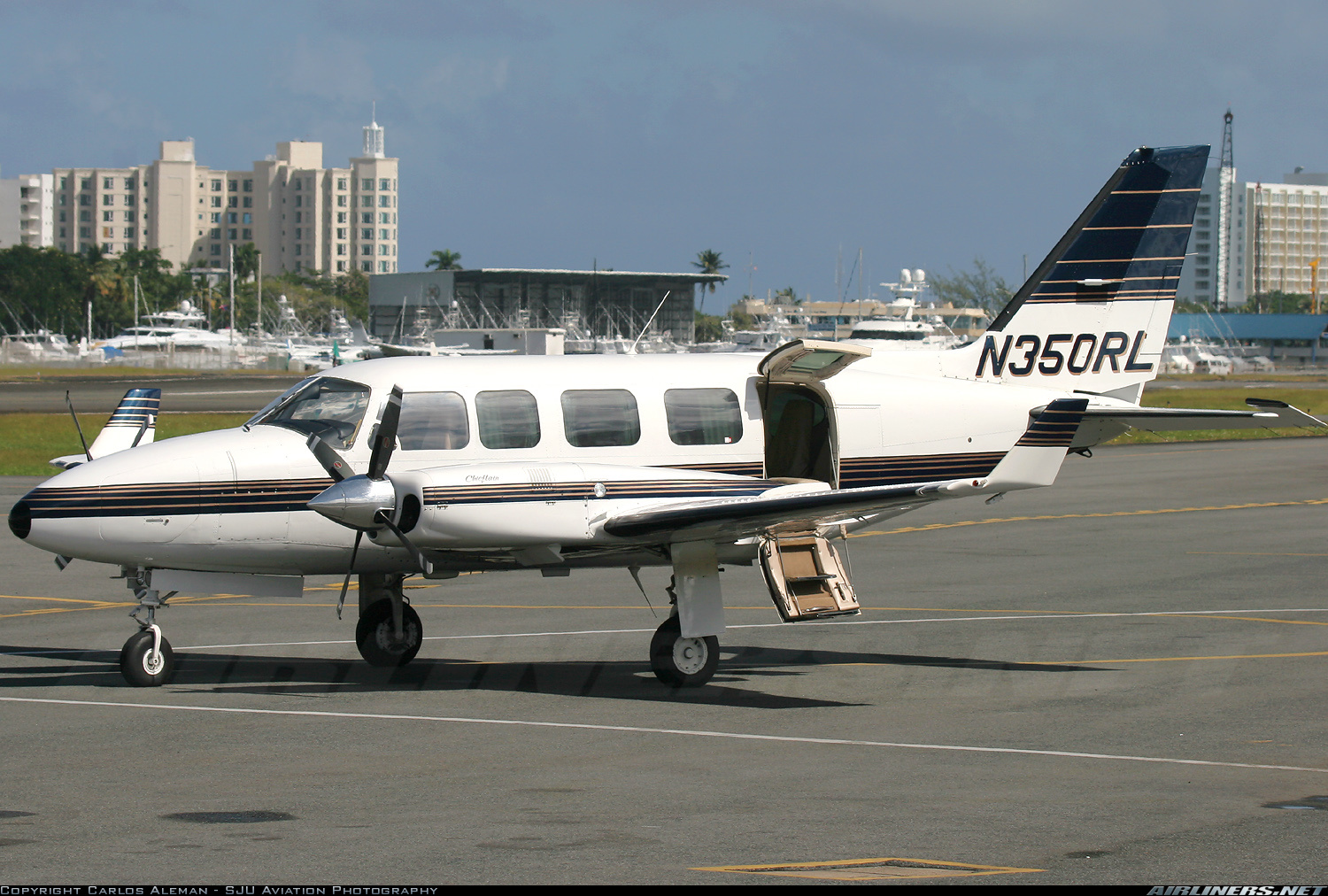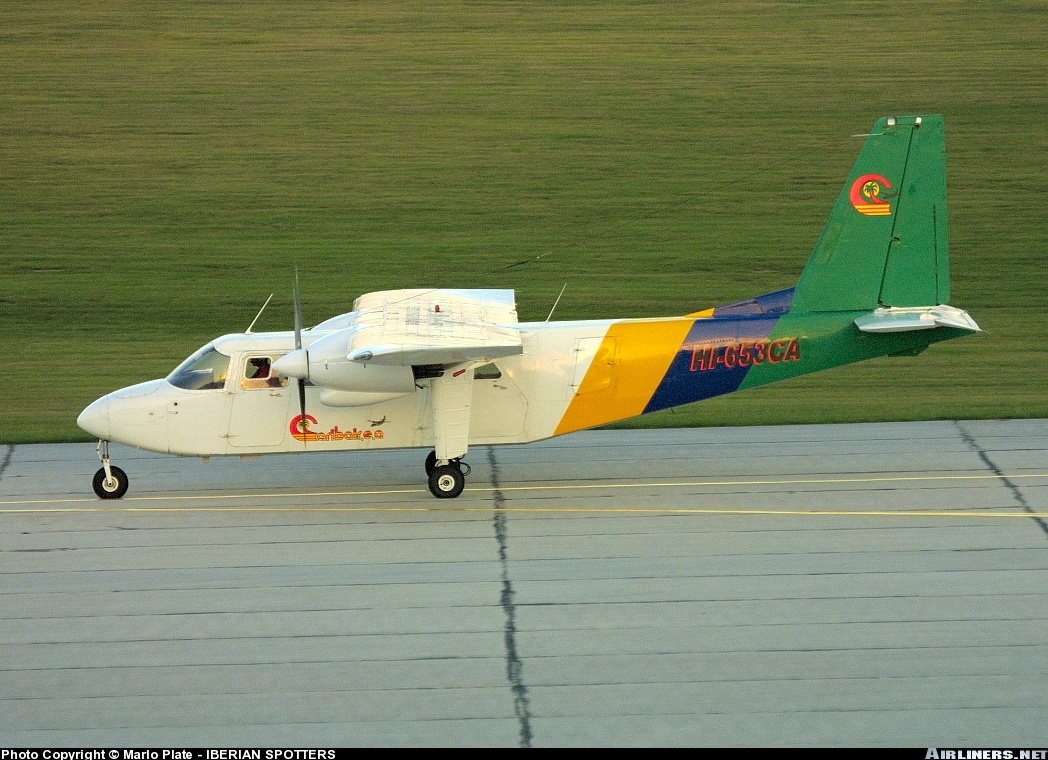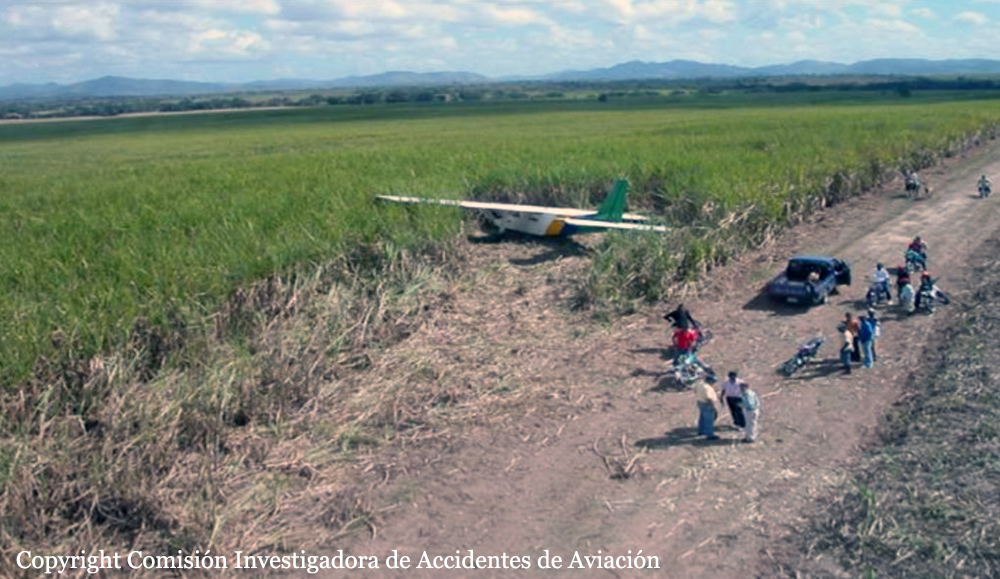Crash of a BAe 3101 Jetstream 31 in Punta Cana
Date & Time:
Oct 12, 2014 at 2025 LT
Registration:
HI816
Survivors:
Yes
Schedule:
San Juan - Punta Cana
MSN:
694
YOM:
18
Crew on board:
3
Crew fatalities:
Pax on board:
10
Pax fatalities:
Other fatalities:
Total fatalities:
0
Captain / Total hours on type:
3000.00
Aircraft flight hours:
29780
Circumstances:
The twin engine aircraft departed San Juan-Luis Muñoz Marín (Isla Verde) Airport, Puerto Rico, on a charter flight to Punta Cana, carrying two pilots, one flight attendant and 10 crew members from Air Europa positioning to Punta Cana. Following an uneventful flight, the crew completed the approach and landing on runway 08. After a roll of about 1,500 feet, the aircraft deviated to the left, made a 45° turn, veered off runway and came to rest in a wooded area, bursting into flames. All 13 occupants evacuated safely, among them two passengers were slightly injured. The aircraft was destroyed.
Probable cause:
The accident was the consequence of the combination of human and technical factor. During the approach to land, the crew observed a fluctuation in oil pressure in the instrument panel of the #2 (right) engine. After landing, the crew activated the thrust reversers on both engines without waiting for the Beta light, an essential indication to ensure a proper operation of those system. This configuration caused the aircraft to turn sharply to the left at an angle of 45° because the thrust reverser system activated on the left engine only. The fluctuation in the oil pressure observed by the crew on final approach and the malfunction of the right engine was the consequence of an oil leak in flight.
Final Report:

